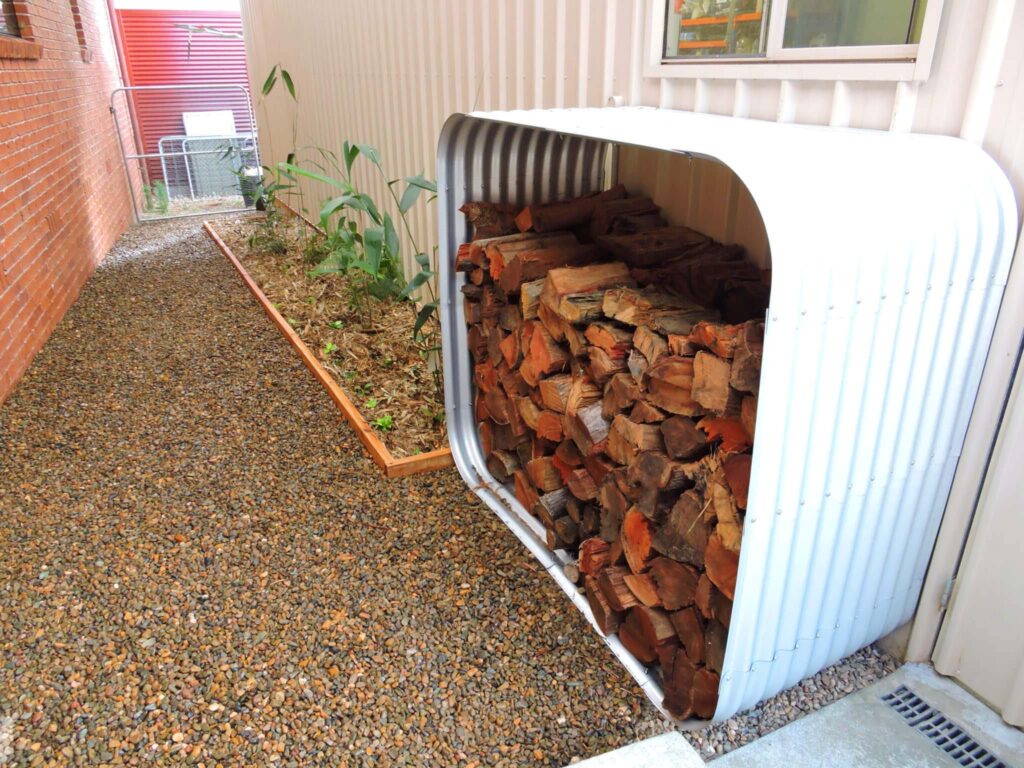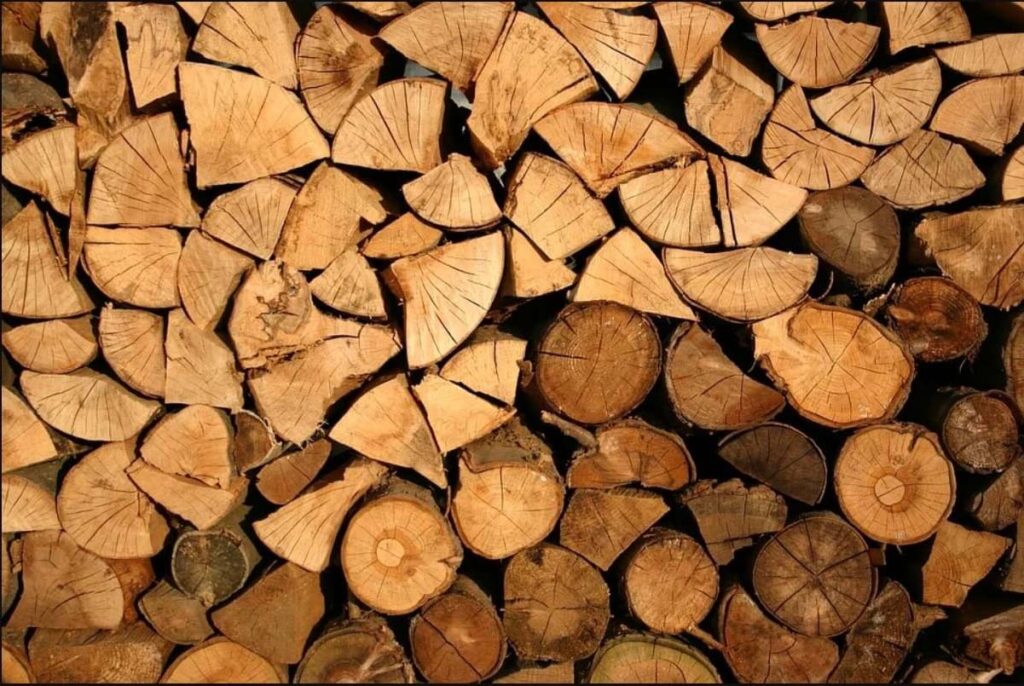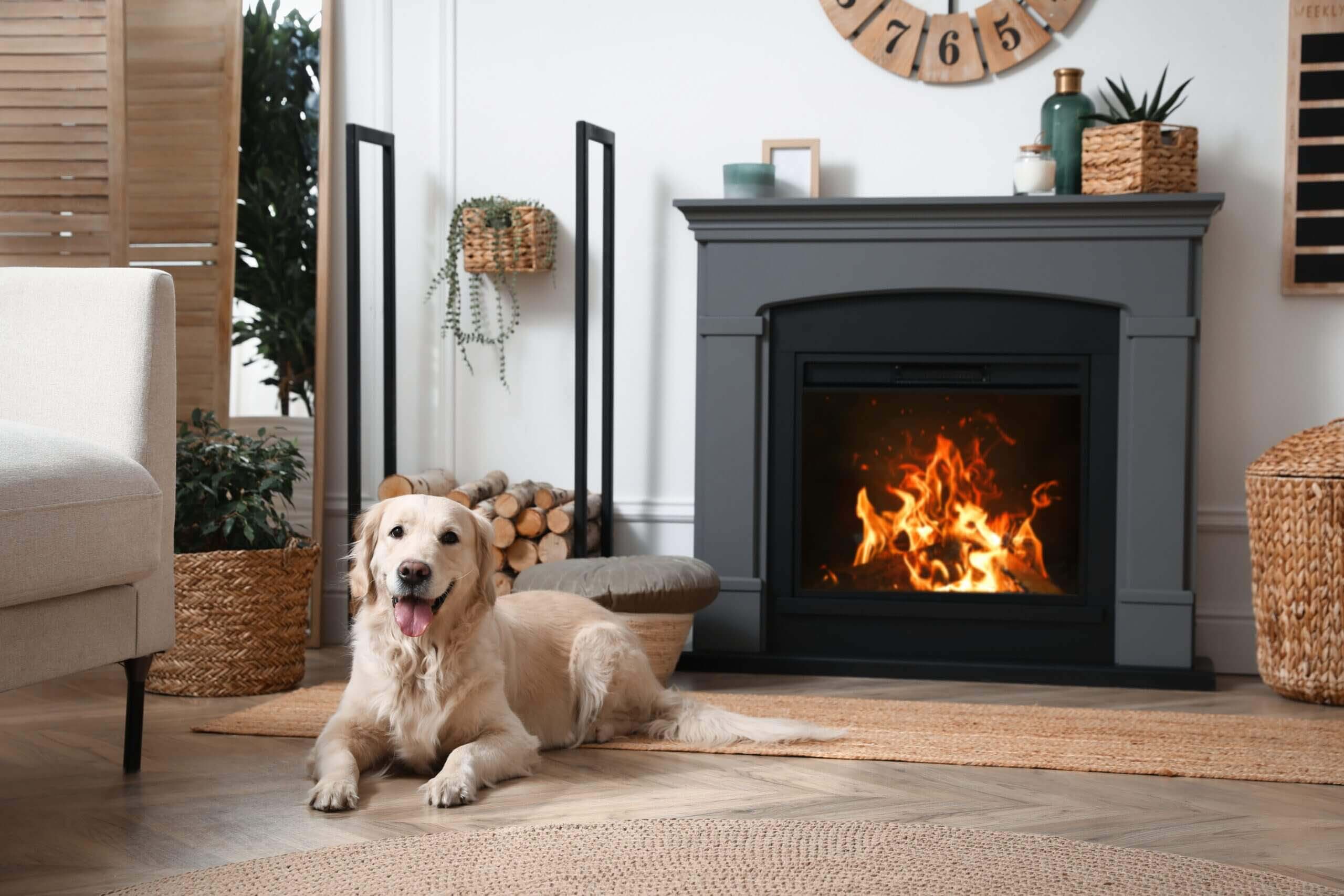Why Is It Important to Source Quality Firewood for Efficient Heating?
Quality firewood serves as the foundation for effective home heating. High-grade wood burns hotter, longer, and cleaner than subpar alternatives, delivering maximum heat output while minimising waste. A well-chosen firewood supply can reduce heating costs by up to 30% compared to poor-quality wood.
The Benefits of Quality Firewood
Searching for firewood near me can lead to a range of options—but choosing high-quality firewood makes a noticeable difference. The burning characteristics of quality firewood offer several key benefits:
- Higher Heat Output: Premium firewood produces consistent, intense heat that warms spaces more effectively
- Reduced Smoke: Clean-burning wood minimises harmful emissions and improves air quality
- Lower Consumption: Superior wood burns longer, requiring less frequent replenishment
- Decreased Maintenance: Quality wood creates less creosote buildup in chimneys
Challenges in Finding Affordable, High-Quality Firewood
Finding affordable, high-quality firewood presents several challenges for homeowners:
- Limited local suppliers with properly seasoned wood
- Varying prices between vendors for similar products
- Difficulty verifying wood quality before purchase
- Seasonal availability affecting costs
- Transportation and delivery expenses

The Long-Term Benefits of Investing in Quality Firewood
The investment in quality firewood pays dividends through improved heating efficiency and reduced long-term costs. Homeowners who source premium wood enjoy better heat production, cleaner air, and fewer maintenance requirements. The key lies in identifying reliable suppliers who offer well-seasoned wood at reasonable prices.
See Also: Why Hiring Experts for Tree Lopping in Sydney is Worth It
What Are the Different Types of Wood and Which Ones Make the Best Firewood?
The choice between hardwood and softwood can significantly impact heating efficiency and fuel costs. Hardwoods have a dense cellular structure, resulting in a longer, hotter burn with minimal smoke production. Softwoods have a lighter, more open cell structure that burns quickly and produces more smoke.
Characteristics of Premium Hardwood Firewood:
- Oak: Creates intense, long-lasting heat
- Maple: Burns hot and slow with minimal smoke
- Hickory: Produces high heat output and pleasant aroma
- Ash: Lights easily and burns steadily
These hardwoods typically contain 4,600+ BTUs (British Thermal Units) per pound, making them highly efficient heating sources.
Softwood Limitations:
- Burns 2-3 times faster than hardwood
- Requires frequent replenishment
- Creates excessive smoke and ash
- Contains 2,500-3,500 BTUs per pound
Pine and fir release high amounts of resin when burned, leading to creosote buildup in chimneys. This sticky substance clings to chimney walls, creating fire hazards and requiring more frequent cleaning.
Identifying Quality Hardwood:
- Weight: Heavier than softwood varieties
- Bark texture: Thick, rough exterior
- Sound: Produces solid “thunk” when pieces strike together
- Grain pattern: Dense, tight growth rings
The superior burn qualities of hardwood make it cost-effective despite higher initial prices. A single load of hardwood can provide heat equivalent to multiple softwood loads, reducing the need for frequent restocking and minimising chimney maintenance requirements.
Professional arborists recommend mixing small amounts of softwood with hardwood loads. The softwood helps initiate the fire, while the hardwood maintains steady heat output throughout the burning cycle.
How Can You Identify Well-Seasoned Firewood That Will Burn Effectively?
Seasoned firewood refers to wood that has been properly dried to achieve optimal burning performance. Fresh-cut wood contains up to 50% moisture content, making it unsuitable for immediate use as firewood. The seasoning process allows this moisture to evaporate naturally, resulting in wood that burns cleaner and more efficiently.
The proper drying time for firewood varies based on several factors:
- Wood species and density
- Initial moisture content
- Local climate conditions
- Storage environment
- Wood size and splitting
Most hardwoods require 6-12 months of proper seasoning to reach ideal moisture levels below 20%. This extended drying period ensures the wood will produce maximum heat output with minimal smoke production.
Key Signs of Well-Seasoned Firewood:
- Visual IndicatorsDeep cracks and splits along the end grain
- Loose or peeling bark
- Grey or darkened colour compared to fresh-cut wood
- Visible separation between growth rings
- Physical CharacteristicsNotably lighter weight than fresh wood
- Hollow sound when pieces are knocked together
- Hard, dry surface texture
- Easily visible end grain checking
Properly seasoned firewood with moisture content below 20% offers significant benefits:
- Higher heat output
- Cleaner burning with less smoke
- Reduced creosote buildup in chimneys
- Easier ignition and sustained burning
- Lower emissions and better air quality
Buyers can perform simple tests to verify wood seasoning:
- Weight Test: Lift and compare similar-sized pieces – seasoned wood feels significantly lighter
- Sound Test: Strike two pieces together – seasoned wood produces a clear, ringing sound
- Bark Test: Press thumbs against the bark – well-seasoned wood’s bark easily peels or falls off
- Split Test: Fresh splits should feel dry to touch and appear lighter in colour than the exterior
Professional firewood suppliers often use moisture meters to guarantee proper seasoning levels. These devices provide accurate readings and help ensure customers receive quality firewood that meets the recommended moisture content standards.
Why Does Moisture Content Matter When Buying Firewood?
Moisture content is a crucial factor in determining the quality and burning efficiency of firewood. Wet firewood can cause several problems:
- Reduced Heat Output: High moisture content forces the fire to expend energy evaporating water instead of producing heat
- Excessive Smoke Production: Damp wood creates thick, heavy smoke that can irritate eyes and lungs
- Creosote Build-up: Burning wet wood leads to dangerous creosote deposits in chimneys, increasing fire hazards
- Difficult Ignition: Wet wood resists lighting and requires more kindling to start
For these reasons, it’s essential to understand the best wood for your log burner and the implications of burning wet seasoned firewood, which can be found in this comprehensive guide.
A moisture meter is an essential tool for checking the dryness of wood before buying it. These handheld devices:
- Provide accurate moisture readings in seconds
- Help identify wood with optimal moisture levels (below 20%)
- Prevent purchasing unsuitable firewood
- Save money by ensuring quality purchases
How to Use a Moisture Meter
- Insert the meter’s pins into the wood’s surface
- Take readings from multiple spots
- Test both the exterior and interior
- Record readings to compare different wood sources
Professional firewood suppliers often use moisture meters to guarantee their product quality. Homeowners can purchase basic moisture meters for £20-£40, making them a worthwhile investment for regular firewood buyers.
Safety Note: Burning wood with high moisture content not only wastes money but poses serious safety risks through chimney fires and carbon monoxide production. A moisture meter helps prevent these hazards while ensuring optimal heating efficiency.
For further insights into the ideal moisture content for firewood, consider referring to this detailed guide on firewood moisture content.
Where Can You Find the Best Local Sources of Quality Firewood?
1. Sawmills: The Primary Source for High-Quality Firewood
Local sawmills are one of the best places to find high-quality firewood. These facilities regularly process timber, which means they have large amounts of wood that is perfect for burning. Sawmills usually have specific areas where they dry out their firewood, making sure it reaches the ideal level of dryness before being sold.
2. Lumber Yards: Another Reliable Option
Lumber yards are another reliable option for finding quality firewood. Many lumber yards sell both construction timber and firewood. The staff at these yards are knowledgeable about different types of wood and how to properly season them. Because they have direct relationships with timber suppliers, these establishments often offer competitive prices.
3. Specialised Firewood Suppliers
There are also specialised suppliers who focus specifically on selling firewood. These include:
- Dedicated firewood merchants
- Tree service companies that process removed trees
- Local farms with woodland management programmes
- Agricultural cooperatives
4. Finding Reputable Sellers Through Strategic Research
To find trustworthy sellers, you’ll need to do some research. Here are a few strategies you can use:
Online Directories
- Check local business listings
- Use Google Maps to search for suppliers
- Look up industry-specific directories
- Refer to council-approved supplier lists
Community Resources
- Join neighbourhood social media groups
- Participate in local farming forums
- Visit community notice boards
- Attend agricultural shows and markets
5. Value-Added Services Offered by Local Suppliers
Many local suppliers go the extra mile by offering additional services that add value to their products:
- Free delivery within a specific radius
- Wood stacking services for convenience
- Seasoning guarantees to ensure optimal burning conditions
- Mixed wood bundles for variety in heating
6. Building Relationships with Local Suppliers
Establishing relationships with local suppliers can open up opportunities for better deals and customised services:
- Bulk purchase discounts for buying in larger quantities
- Reserved seasonal stock during peak demand periods
- Custom orders tailored to your specific needs
- Regular delivery schedules for consistent supply
7. Networking Opportunities at Agricultural Shows
Agricultural shows provide excellent networking opportunities where you can meet firewood suppliers face-to-face:
- Inspect wood quality firsthand before making a purchase decision.
- Compare prices from different vendors to ensure you’re getting the best deal.
- Discuss specific requirements such as size or type of wood directly with multiple suppliers.
8. Professional Tree Services: A Source of Processed Firewood
Professional tree services often convert removed trees into firewood instead of letting them go to waste:
- These companies understand proper wood processing techniques which ensures high-quality end product.
- They can provide detailed information about the wood’s origin (where it came from), age (how long it’s been since it was cut down), and seasoning status (whether it’s already dried out or still needs time).
However, when seeking professional tree services, it’s crucial to ensure that they are licensed and
How Can Buying Firewood in Bulk Help You Save Money?
Purchasing firewood by the cord represents a significant cost advantage compared to buying smaller quantities. A cord measures 128 cubic feet, specifically stacked in a pile 4 feet high, 4 feet deep, and 8 feet long. This standardised measurement helps buyers understand exactly what they’re getting for their money.
Bulk firewood purchases offer substantial savings:
- Volume Discounts: Suppliers often reduce prices by 20-30% for full cord purchases
- Reduced Delivery Costs: Fewer trips mean lower transport fees
- Price Protection: Stocking up shields buyers from seasonal price increases
- Convenience Factor: Less frequent ordering saves time and effort
A single cord typically provides 6-8 weeks of heat for an average household using wood as their primary heat source. Many suppliers offer split pricing options:
- Full Cord
- Half Cord
- Quarter Cord (Face Cord)
Buyers should note that some sellers use terms like “truckload” or “pile.” These non-standard measurements make price comparisons difficult. Insisting on cord measurements ensures fair value comparisons between different suppliers.
Smart bulk-buying strategies include:
- Coordinating with neighbours for shared deliveries, which can also help resolve any potential disputes regarding property lines as seen in this Reddit discussion
- Taking advantage of off-season pricing
- Negotiating multi-cord discounts
- Checking storage capacity before ordering
What Should You Look For To Avoid Overpaying When Buying Firewood?
Smart comparison shopping helps secure quality firewood at fair prices. A systematic approach to evaluating sellers prevents unnecessary expenses while ensuring value for money.
Essential Price Comparison Factors:
- Base price per cord or fraction
- Delivery distance and associated fees
- Stacking services (if offered)
- Minimum order requirements
- Seasonal price variations
- Wood species mix
Red Flags When Pricing:
- Sellers who refuse to specify wood types
- Prices significantly below market average
- Hidden charges revealed after agreement
- Reluctance to provide delivery details
- Unclear measurement standards
Creating a detailed spreadsheet helps track multiple quotes and compare total costs effectively. Include columns for:
- Seller name and location
- Wood types offered
- Price per unit
- Delivery charges
- Additional services
- Total cost per delivery
Value-Added Services Worth Considering:
- Free stacking
- Guaranteed seasoning time
- Mixed wood bundles
- Regular delivery schedules
- Quality guarantees
Local market research establishes reasonable price ranges for specific areas. Calling multiple suppliers and documenting quotes creates leverage for negotiation. Requesting references from previous customers validates both quality claims and pricing fairness.
Seasonal timing impacts prices significantly. Purchasing during spring or summer often yields better rates than peak winter demand periods. Some suppliers offer early booking discounts or storage options for advance purchases.
Working with established suppliers who maintain transparent pricing structures reduces the risk of hidden costs. Professional firewood merchants typically provide detailed invoices listing all charges upfront.
How Can Proper Storage Extend The Life And Quality Of Your Firewood Supply?
Storing firewood properly plays a crucial role in maintaining its quality and burn efficiency. A well-planned storage system protects wood from moisture damage and preserves its seasoning status.
Essential Storage Requirements:
- Elevate wood at least 15cm off the ground using pallets or pressure-treated lumber
- Create adequate airflow with space between wood rows
- Position the storage area away from buildings to prevent pest issues
- Install a sturdy roof or waterproof cover that extends beyond the woodpile
- Select a location with good drainage to prevent water pooling
Optimal Storage Conditions:
- South-facing placement maximises sun exposure
- Covered top with open sides for ventilation
- Single row stacking for enhanced air circulation
- 5-10cm spacing between rows when multiple rows are necessary
Proper wood stacking techniques enhance the storage effectiveness. The traditional method involves creating a stable base layer and cross-stacking end pieces for support. This approach prevents collapse while maintaining essential airflow through the pile.
A dedicated storage area should accommodate a full season’s worth of firewood, allowing rotation of stock. This system enables newly acquired wood to season properly while seasoned wood remains ready for immediate use.
Regular inspection of stored firewood helps identify potential issues like mould growth or pest infestation. Removing affected pieces promptly prevents problems from spreading throughout the woodpile.

When Should Homeowners Consider Hiring Professional Tree Services In Relation To Their Firewood Needs?
Professional tree services play a vital role in safely converting problematic trees into valuable firewood resources. Homeowners should consider professional assistance in these specific situations:
1. Dead or Diseased Trees
- Trees showing significant decay
- Trees affected by pest infestations
- Storm-damaged specimens
2. Safety-Critical Locations
- Trees near power lines
- Specimens close to buildings
- Trees overhanging public areas
Professional arborists bring essential expertise to tree removal for firewood:
- Proper assessment of tree health and structural integrity
- Safe cutting techniques that protect property
- Correct equipment and protective gear
- Knowledge of local regulations and permit requirements
- Efficient processing of wood into manageable sizes
The cost of professional tree services often balances out through:
- Reduced risk of property damage
- Prevention of personal injury
- Proper sizing of logs for seasoning
- Immediate access to fresh wood supply
- Compliance with local council regulations
Licensed tree services also provide additional benefits:
- Insurance coverage for the work
- Professional clean-up services
- Expert advice on wood storage
- Recommendations for optimal drying times
- Guidance on species-specific burning characteristics
What Are the Key Steps to Finding Quality Affordable Firewood?
Finding quality firewood at reasonable prices requires a strategic approach. Successful firewood sourcing combines these essential steps:
- Select the right wood type – hardwoods like oak and maple provide optimal heat output
- Verify proper seasoning through visual checks and moisture meter readings
- Maintain moisture content below 20% for efficient burning
- Source from reputable local suppliers such as sawmills and lumber yards
- Purchase in bulk quantities measured by the cord
- Store wood properly in a dry, elevated, ventilated space
- Consider professional tree services for converting fallen trees to firewood
Smart firewood buyers who follow these guidelines can enjoy warm, efficient fires without excessive costs. The investment in quality firewood pays dividends through better heat output, reduced smoke, and lower long-term expenses. Armed with knowledge about wood types, seasoning requirements, and reliable sourcing methods, homeowners can confidently secure their winter fuel supply while keeping their budget intact.

